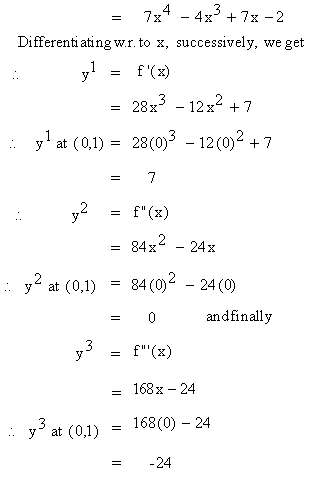|
4.15 Higher Order Derivatives
If y = f ( x ) then y' = f' ( x ). This derivative is itself a function. Consider the derivative of f' ( x ) which is denoted by f' ( x ). This is known as second order derivative. This can be continued to third, fourth and so on. Thus you can have successive derivatives of f ( x ), which are known as the higher order derivatives of f (x). Instead of using the "prime" notation which is messy, it is advisable to use a numerical notation like
 
This process is known as the successive differentiation.
Example 72 Find

Solution : y =
f ( x )

|